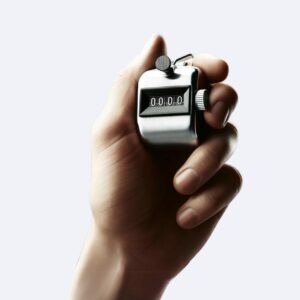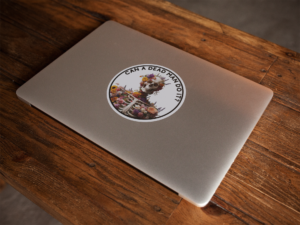Continuous Measurement
Table of Contents
Welcome to the start of our RBT Competency Assessment blog post series! In this series, we’ll delve into each task on the RBT Competency Assessment in detail. Our goal is to help new Behavior Technicians (BTs) prepare for their initial competency assessments and provide a valuable refresher for Registered Behavior Technicians (RBTs) renewing their certification.
In the field of Applied Behavior Analysis (ABA), accurate data collection is the cornerstone of effective intervention and treatment plans. One of the fundamental methods for collecting this data is through continuous measurement. Continuous measurement involves the precise and consistent recording of specific behaviors, allowing behavior analysts to track and analyze behavior changes over time. This method is crucial for developing and adjusting intervention plans to ensure they meet the individual needs of clients.
Continuous measurement is particularly important because it provides a detailed and comprehensive view of a client’s behavior. By capturing data in real-time, behavior analysts can identify patterns, evaluate the effectiveness of interventions, and make informed decisions to enhance treatment outcomes. In this blog post, we will explore what continuous measurement is, why it is used in ABA, and delve into the different types of continuous measurement, including rate, frequency, duration, latency, and inter-response time (IRT).
By understanding and mastering continuous measurement, Registered Behavior Technicians (RBTs) can contribute significantly to the success of ABA programs, ensuring that clients receive the most effective and personalized care. Let’s begin by defining continuous measurement and discussing its role in ABA.
What is Continuous Measurement?
Continuous measurement is a data collection method used in Applied Behavior Analysis (ABA) to record every instance of a specific behavior during an observation period. This approach allows for precise and comprehensive tracking of behaviors, providing detailed information about their occurrence. Unlike discontinuous measurement methods, which sample behavior at specific intervals, continuous measurement aims to capture the full picture by documenting each instance of the behavior.
In ABA, continuous measurement is essential because it provides accurate and reliable data that can be used to make informed decisions about intervention strategies. By tracking behaviors continuously, behavior analysts can identify patterns, determine the frequency and intensity of behaviors, and evaluate the effectiveness of interventions. This method ensures that no instances of behavior are missed, leading to a more thorough understanding of the client’s behavior and needs.

Why is Continuous Measurement Used in ABA?
Continuous measurement is used in ABA for several important reasons:
Precision and Accuracy:
- Continuous measurement provides precise and accurate data, which is crucial for developing effective intervention plans. Accurate data helps behavior analysts understand the true nature of the behavior, including its frequency, duration, and intensity.
Data-Driven Decision Making:
- Continuous measurement enables behavior analysts to make data-driven decisions. By having detailed records of behavior, they can evaluate the effectiveness of interventions and make necessary adjustments to improve outcomes.
Monitoring Progress:
- Continuous measurement allows for ongoing monitoring of a client’s progress. Behavior analysts can track changes in behavior over time and determine whether interventions are producing the desired effects.
Individualized Interventions:
- With continuous measurement, interventions can be tailored to the individual needs of the client. Behavior analysts can identify specific behavior patterns and develop personalized strategies to address them.
Accountability:
- Continuous measurement provides a clear record of behavior, which is essential for maintaining accountability. It ensures that interventions are based on objective data rather than subjective observations.
Types of Continuous Measurement
In ABA, several types of continuous measurement are used to collect data on different aspects of behavior. These include rate, frequency, duration, latency, and inter-response time (IRT). Each type of measurement serves a specific purpose and provides unique insights into the behavior being observed.
Rate
Definition and Explanation:
- Rate refers to the number of times a behavior occurs within a specific period. It is calculated by dividing the total number of occurrences by the length of the observation period. Rate is particularly useful for behaviors that have clear beginning and ending points and occur frequently.
Examples of How Rate is Used in ABA:
- Tracking the number of times a student raises their hand in class within an hour.
- Measuring the number of times a client completes a specific task during a therapy session.
Frequency
Definition and Explanation:
- Frequency is the simple count of how many times a behavior occurs. It is similar to rate but does not take into account the length of the observation period. Frequency is useful for behaviors that are easy to count and have distinct occurrences.
Difference Between Rate and Frequency:
- While frequency is the raw count of behavior occurrences, rate provides a standardized measure by considering the observation period, making it useful for comparing behavior across different time frames.
Examples of How Frequency is Used in ABA:
- Counting the number of times a child engages in a stereotypic behavior during a session.
- Tallying the number of times a client follows a given instruction.
Duration
Definition and Explanation:
- Duration refers to the total amount of time a behavior occurs. It is used for behaviors that vary in length and provides information about how long a behavior lasts.
Examples of How Duration is Used in ABA:
- Measuring the total time a student spends on-task during a class period.
- Recording the length of time a client engages in a tantrum.
Latency
Definition and Explanation:
- Latency is the time that elapses between the presentation of a stimulus and the onset of the behavior. It measures how quickly a behavior occurs after a given cue or instruction.
Examples of How Latency is Used in ABA:
- Recording the time it takes for a child to begin responding after being given a command.
- Measuring the delay between the presentation of a social cue and the initiation of a social response.
Inter-Response Time (IRT)
Definition and Explanation:
- Inter-response time (IRT) is the amount of time that passes between consecutive instances of a behavior. It provides information about the spacing of behavior occurrences.
Examples of How IRT is Used in ABA:
- Measuring the time between instances of a student blurting out in class.
- Recording the time between bites during a meal for a client with feeding issues.
By understanding and utilizing these types of continuous measurement, RBTs can collect comprehensive and accurate data, leading to more effective and individualized intervention plans.
Recap
Continuous measurement is a fundamental aspect of Applied Behavior Analysis (ABA), providing the detailed and accurate data necessary for developing effective interventions. By recording every instance of a behavior, behavior analysts can gain a comprehensive understanding of their clients’ behavior patterns, making it possible to create personalized and effective treatment plans.
In this blog post, we explored what continuous measurement is and why it is crucial in ABA. We also discussed the different types of continuous measurement, including rate, frequency, duration, latency, and inter-response time (IRT). Each type serves a unique purpose and offers specific insights into behavior, allowing for precise and individualized data collection.
Mastering continuous measurement is essential for Registered Behavior Technicians (RBTs) as it equips them with the skills needed to contribute to the success of ABA programs. By accurately tracking and analyzing behavior, RBTs can help ensure that interventions are data-driven and effective, ultimately leading to better outcomes for clients.
Explore More Resources
If you found this guide on continuous measurement helpful, be sure to explore more resources on our website. We offer a wealth of information, including detailed articles, study guides, and practical tips to help you succeed as a Registered Behavior Technician (RBT).
Are you preparing for the RBT competency assessment? Check out our comprehensive study materials and mock exams designed to help you ace the test and become a confident, competent RBT.
For more information on becoming a Registered Behavior Technician and for the latest research and resources in Applied Behavior Analysis, visit the Behavior Analyst Certification Board (BACB) website.
Share this blog with your peers and colleagues to spread the knowledge and support the ABA community!
FAQ Section
- Q: What is continuous measurement in ABA?
- A: Continuous measurement involves recording every instance of a behavior during an observation period to capture detailed and comprehensive data.
- Q: Why is continuous measurement important?
- A: It provides precise and detailed data, enabling behavior analysts to make informed decisions, track progress accurately, and adjust interventions effectively.
- Q: What are the types of continuous measurement?
- Frequency: Counting how many times a behavior occurs.
- Rate: Frequency divided by time.
- Duration: Total time a behavior occurs.
- Latency: Time between a stimulus and the response.
- Inter-Response Time (IRT): Time between consecutive instances of a behavior
- Q: How do continuous and discontinuous measurement differ?
- A: Continuous measurement records every instance of a behavior, while discontinuous measurement samples behavior at specific intervals, potentially missing some occurrences.



